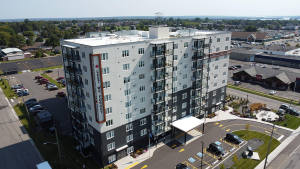Prompt payment legislation is on the rise across Canada but not without caveats and some surprises.
Norton Rose Fulbright partner Dan Leduc presented the Prompt Payment: How Ya’ Doin’ Ontario? What about the Rest of Us? Why the Push for Prompt Payment Makes Sense as a plenary session at the Canadian Institute of Steel Construction’s (CISC) steel conference held recently in Vancouver.
Leduc said he was hired by the Prompt Payment Ontario association in 2011 and worked with the organization until it was disbanded once legislation became law in Ontario in 2019.
Leduc summarized the current state of prompt payment in Canada and stressed the overriding goal is to achieve “cash neutrality.”
“For every dollar you send out on material, labour and overhead, how quickly can you get that back?” he asked.
The North American monetary system is based on a “net 30 days” system, Leduc added, but the construction industry rarely stuck to that standard until the advent of prompt payment legislation.
“You should understand and arrange yourself internally for whatever payment terms are going to apply to you. If you’re a subcontractor in Ontario, you should be expecting to get paid 35 days after an invoice, called the proper invoice, both from the general contractor and the owner,” he said. “If you’re not getting paid in that 35 day window, why is that?”
While a company does have recourse to go to adjudication, Leduc said, it makes more sense to first adjust internal thinking at a firm to meet new conditions.
“You’ve got to change the inner workings or your accounting, plus you have to change your mindset to some degree because the industry for the last 30 years has been so used to getting paid on 70, 80 or 90 day terms that they’ve priced it into their estimate,” he said.
One of the unintended consequences of prompt payment legislation is that with increased cash flow more employees have struck out on their own and started their own construction firms, Leduc said.
“That credit facility you might need at the beginning is much smaller now, so one of the downsides we’re seeing is a lot of middle managers both start their own companies and compete against former employers and the issues that come out of that in terms of stealing opportunities,” he said.
“That’s one thing one nobody reflects on, your retainage policy and how you keep your people happy internally, because you’re seeing a lot more movement starting up their own companies.”
While there has been progress across Canada in terms of prompt payment legislation it is not evenly distributed and Leduc said in some cases more needs to be done.
“The Ontario legislation has been active and we’ve had prompt payments since essentially October 2019. It’s grandfathered in so it takes more time but now it pretty much applies to each and every project in Ontario. You have Saskatchewan legislation that’s similar to Ontario and has been around for quite a while this year and Alberta that just came out at the end of August,” he said.
The Federal Prompt Payment for Construction Work Act received royal assent in 2019, Leduc added, but is not yet enacted. Other provinces are showing differing levels of progress.
“Manitoba’s coming, Nova Scotia has (legislation) that’s passed but hasn’t been enacted, which we don’t understand, but it’s slowly making its way. The unfortunate example is B.C. where it seems to have reverted back. They’ve just said ‘no.’ So all the lobbying, all the effort has really just put us right back to the starting point again, which is unfortunate,” Leduc said.
Follow the author on Twitter .











Recent Comments
comments for this post are closed